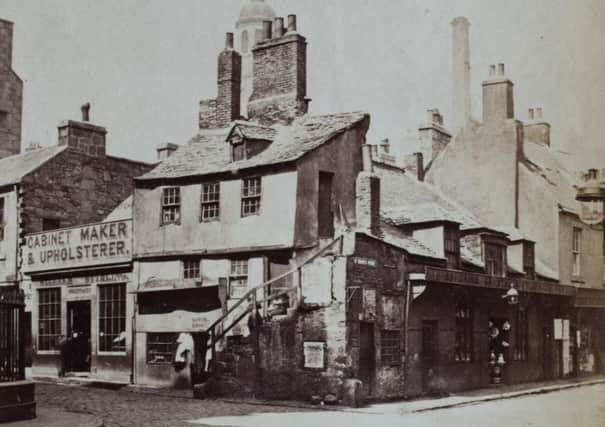Ghostly images of lost city keep Edinburgh’s history alive


These sepia stained images are to be the focus of a unique study at the Patrick Geddes Centre, Riddle’s Court.
The study day on 12 May, led by photography historian and academic Roddy Simpson, will focus on the work of Victorian photographer Archibald Burns, who recorded medieval areas of the city before they were demolished in order to create a more modern landscape.
Advertisement
Hide AdAdvertisement
Hide AdThe intriguing shots freeze impressions of the past. There’s College Wynd in the process of being demolished, its abandoned crumbling abodes and uneven setts having seen better days.
Another image records J Waugh’s Wollen & Rag Store at the Head of West Bow in 1868, while the business of William Stirling, Cabinet Maker and Upholsterer, on the corner of St Mary’s Wynd and the Cowgate in the mid-1860s gives a unique glimpse of what was.
Other eye-catching images include High School Wynd and a smog obscured Cowgate, the long forgotten G O’Donnell’s Furniture Warehouse on the right, again in the mid 1860s.
“Archibald Burns’ photographs of Edinburgh’s Old Town are very different and show the grim realities of the appalling condition in which many people had to live,” says Simpson.
Advertisement
Hide AdAdvertisement
Hide Ad“As well as providing insight on the conditions at the time, they also give a fascinating understanding of the history of the area as many of the buildings he photographed had at one time been the dwellings of the high and noble but had become the squalid abodes of the poorest of the poor.”
Born in 1831, Burns was based in Edinburgh, capturing images of the city from 1858 until his death in 1880.
He documented Edinburgh through various publications and recorded the historic buildings in a section of the city that was cleared in the 1860s.
Rediscovering those long lost areas, Simpson will explore Burns’ work and the afternoon will include a walking tour of related Burns sites.
Advertisement
Hide AdAdvertisement
Hide AdThe day will start and end at Riddle’s Court where there will be an opportunity for a free tour of our 16th century building.
Simpson adds, “Burns’ produced two exceptional series of images which will be looked at during the Study Day.
“His photographs which illustrated the book Picturesque ‘Bits’ from Old Edinburgh, contrast the historical Royal Mile with the squalor of the Cowgate, while his photographs for the Edinburgh Improvement Trust in 1870 document an area between the Cowgate and what is now Chambers Street in the process of being demolished.
“Without Burns photographs there would not be the graphic and tangible reminders of what has been lost in an evolving urban environment.”
The study day will take place between 10am and 4pm, Sunday 12 May, at the Patrick Geddes Centre, Riddles Court, Lawnmarket costs £22-£30, tickets from www.eventbrite.co.uk